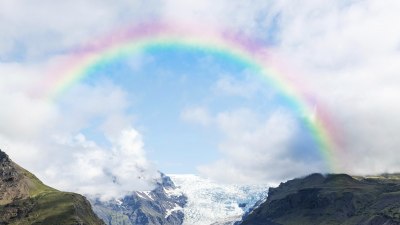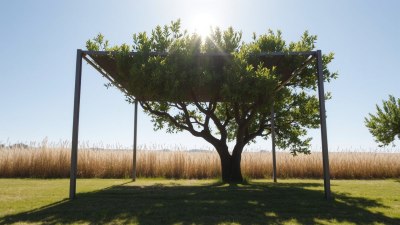What Makes a Rainbow Full Circle and How to See One
Discover the science behind full-circle rainbows and how to observe them in nature.

Rainbows are one of nature's most captivating phenomena, often seen as colorful arcs across the sky following a rain shower. Many people are familiar with the conventional image of a rainbow as a semicircular arc, but have you ever wondered what makes a rainbow a full circle? In this article, we will explore the science behind full-circle rainbows and offer tips on how to see one.
Understanding Rainbows
Before we delve into full-circle rainbows, it's essential to understand how rainbows are formed. A rainbow is created through a combination of refraction, reflection, and dispersion of light. When sunlight passes through raindrops in the atmosphere, it bends (or refracts), reflects off the inner surface of the raindrop, and then exits the drop, bending again. This process results in the dispersion of light into its constituent colors: red, orange, yellow, green, blue, indigo, and violet.
The Geometry of a Rainbow
The geometry of a rainbow is crucial in understanding why it is often seen as an arc rather than a full circle. The light is refracted at a specific angle (usually around 42 degrees for red light). As you stand and observe a rainbow, you are typically looking at it from a particular vantage point where the angles between you, the sun, and the raindrops create the semicircular arc we know. The ground obstructs the other half of the circle from view.
Seeing the Full Circle
While we commonly perceive rainbows as arcs, full-circle rainbows do occur, especially in specific conditions. You can observe a full circle rainbow when you are at a higher altitude. When you are up on a mountain, for instance, and looking down at the rain or water droplets below, the entire circle becomes visible. Airplanes also provide an excellent vantage point for witnessing a complete circle rainbow.
Conditions for a Full Circle Rainbow
To see a full-circle rainbow, certain atmospheric conditions must be met. First, you need both sunlight and rain. Ideally, it should be sunny with rain falling around you, not directly overhead. As the sun shines on the water droplets, the light refracts and reflects, allowing for the possibility of a full circle. Note that if there are large areas of clear sky, looking down into a mist or after a good rain can enhance your chances.
Alternative Ways to Create Full Circle Rainbows
If you're unable to be in the right location at the perfect time, there are alternative ways to create the illusion of circular rainbows. One common approach is the use of a spray or mist of water. On a sunny day, if you're near a fountain or a garden sprinkler, you can position yourself so that the sun is at your back while aiming toward the mist. This setup allows for the dispersion of light through the water droplets and can result in a circular rainbow effect.
Another Method: Artificial Light Sources
Another method to create full-circle rainbows involves using artificial light. A simple garden sprayer can create a fine mist, and when sunlight hits this mist at the correct angle, you can create a makeshift rainbow in your backyard. Alternatively, using a garden hose with a fine nozzle when aiming towards the sun can achieve a similar effect. Remember to position yourself between the light source and the mist to see the full circle.
Enhancing Your Rainbow Viewing Experience
To enhance your chances of seeing a rainbow, there are a few tips you can follow. First, schedule your nature outings for spring or summer, when rain showers are more likely to occur. Use weather apps or forecasts to watch for sunny conditions immediately following rainstorms. Being aware of local geography can also enhance your chances; locations with hills or mountains provide great vantage points.
Photography Tips for Rainbows
If you are lucky enough to catch a glimpse of a full-circle rainbow, you might want to document this beautiful phenomenon. Here are some photography tips: use a polarizing filter to reduce glare and enhance colors. Shoot in HDR (High Dynamic Range) mode to capture the full range of light. Remember to pay attention to your composition; including elements of the landscape can add better context and visual interest to your images.
Seeing a full-circle rainbow is an enchanting experience that requires specific atmospheric conditions and an optimal vantage point to appreciate its beauty fully. By understanding how rainbows form and knowing when and where to look, you can increase your chances of witnessing this captivating natural wonder. Whether you encounter it in the sky after a rain shower or create your own with a garden hose, full-circle rainbows remind us of nature's incredible artistry.











